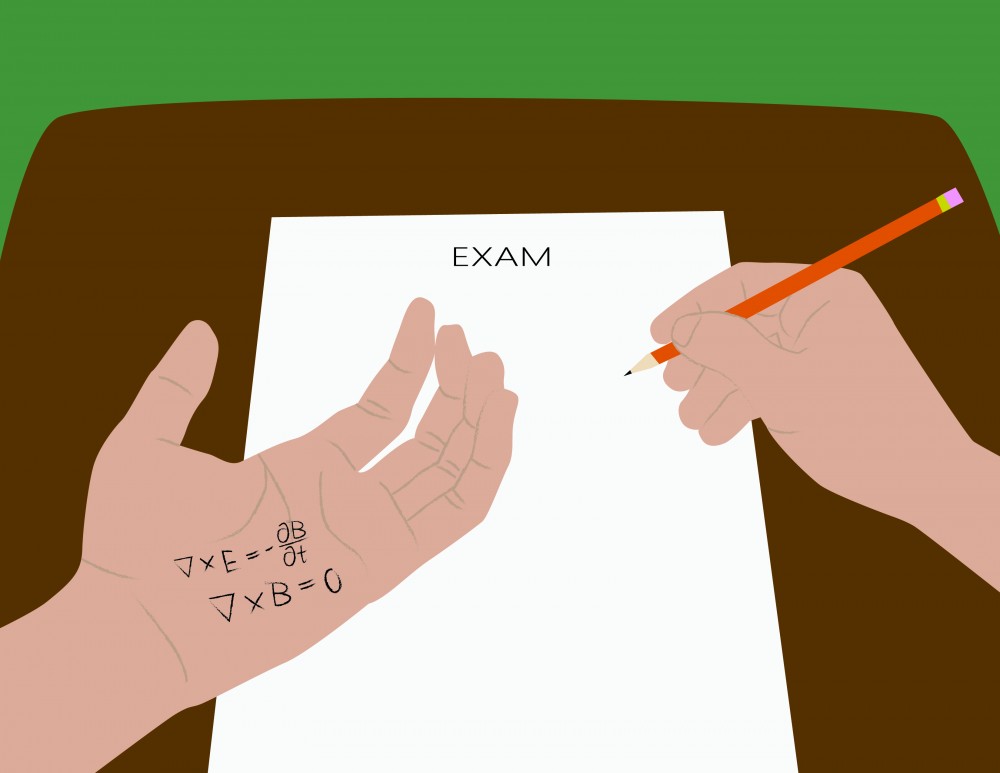Reported cases of cheating at the University of Minnesota have declined in the past five years, but University officials say it’s difficult to know the full extent of cheating on campus.
Last school year, there were 387 reports of scholastic dishonesty on the Twin Cities campus, a 24 percent drop from 2013-14 academic year, according to data by the Office for Community Standards. The number of cases represents only 0.7 percent of the entire student body. Reports had been steadily increasing since the 2000-01 academic year, peaking in the 2013-14 academic year with 507 reports.
“I think these numbers are extremely low for a campus this size,” said Sharon Dzik, director of the Office of Community Standards, which handles academic integrity on campus. “It is very difficult to know if people are cheating.”
Reports of cheating vary slightly from school to school. The College of Liberal Arts, the largest school at the University, had an average of 115 reports per year over the past four years, around 0.8 percent of the student body. The Carlson School of Management, in comparison, averaged only 13.5 cases over the same time frame, which is around 0.3 percent of CSOM students.
The College of Science and Engineering has the highest percentage of reported cases over the past four years — an average of 1.3 percent of total CSE student enrollment.
“Historically, engineering schools — not just us, but all of them — have had fairly high reporting numbers,” said Paul Strykowski, CSE’s associate dean for undergraduate programs. “One of the reasons is that we highly encourage faculty to report.”
Strykowski said the college took a more aggressive role in preventing academic dishonesty about four years ago after complaints from students and faculty about the prevalence of cheating. The college’s required course for first year students now spends one week discussing academic integrity, he said.
Last school year, CSE saw a 70 percent decline in reported cases from the 2014-15 academic year, the largest drop at the University.
However, Strykowski said it’s becoming increasingly difficult to catch students who cheat.
“I don’t know that anyone knows how prevalent cheating is today,” Stykowski said.
Studies on cheating have found a high percentage of colleges students engage in cheating. On a self-reported survey, 68 percent of undergraduates admitted to cheating, according to work by the International Center for Academic Integrity.
Students say that problem goes beyond the more conventional ways of cheating, like looking up answers for an exam in class.
Trevor Sherbert, a sophomore studying history, said he often sees other CLA students plagiarize research papers.
“I think that students will seek help wherever they can find it if they’re desperate enough,” Sherbert said. “Everybody knows what cheating is, but everybody does it differently.”
Some students share notes, homework answers and tests from previous years, said Cooper Devereux, a junior studying anthropology.
“I think most students see it as a way to get by because school is so hard,” he said.
Kyra Schaefer, a senior studying mechanical engineering, said many engineering students copy answers for homework from websites. “There’s no way of tracking it,” she said.
Dzik said new technology is making it easier for students to cheat and harder for instructors to catch them.
She pointed to “contract cheating,” when students get others to do coursework for them, often by paying a third-party.
“You can pay someone to write your paper for you. You can pay people to take online exams for you. You could probably pay someone to do a whole course,” Dzik said.
However, cheating often goes unreported, which is likely contributing to the low number of cases at the University, she said.
Instructors are required to report cheating to the Office of Community Standards, Dzik said, but not all faculty end up reporting cases.
Jessica Medearis, of CLA’s office of undergraduate education, said that reporting cases takes time for instructors.
“Faculty and instructors rightly want to focus time, energy, and resources on [teaching],” Medearis said in an email to the Minnesota Daily.
However, Strykowski said it’s important that instructors report cheating when it happens.
“We want to help young people understand when mistakes are made and we want to make sure young people have protections in the cases where they are falsely accused,” he said.
CSE takes an open approach to discussing cheating with students, Strykowski said, which includes acknowledging the challenges students face and why they may choose to cheat.
“As a student, there’s a lot of stress,” he said. “And sometimes that stress leads to bad decision making.”
Strykowski said conversations about cheating go beyond breaking the University’s policy.
Although preventing academic cheating is difficult, Strykowski tries to stress to students that deciding to cheat, or not to cheat, comes down to values of integrity and honesty.
“We just try to stick to the fundamentals of being a good human and I think that resonates with students,” he said.

















